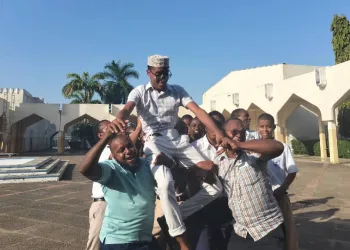According to an analysis by the BBC, over 70,000 Russian soldiers have died in Ukraine. Notably, volunteers—civilians who enlisted after the war began—now represent the largest group of fatalities since Russia’s full-scale invasion in 2022.
Every day, Russian media and social networks publish the names, obituaries, and funeral photographs of the deceased. BBC Russian, along with the independent site Mediazona, has compiled these names from various sources, ensuring they were verified through official reports or family acknowledgments.
The analysis identified 70,112 Russian soldiers killed in Ukraine, although the true number is likely higher, as some families do not disclose their loved ones’ deaths. Among the deceased, 13,781 were volunteers, making up approximately 20% of the total. Previously, former prisoners who enlisted in exchange for pardons had the highest death toll, now accounting for 19%, while mobilized soldiers make up 13%.
Since October of last year, volunteer fatalities have consistently exceeded 100 per week, with some weeks reporting over 310 deaths.
Ukraine, on the other hand, rarely comments on its own casualties. President Volodymyr Zelensky stated in February that 31,000 Ukrainian soldiers had died, but U.S. intelligence suggests the actual losses may be greater.
One story reflecting the fate of many volunteers is that of Rinat Khusniyarov from Ufa, who, after two jobs to support his family, enlisted at 62 and was killed less than three months later. His obituary described him as a “hardworking, decent man.”
Most volunteers come from smaller towns in Russia where stable jobs are scarce. While many enlist voluntarily, some in Chechnya have reported coercion. Some volunteers have expressed confusion over their contracts, which often lack an end date, leading them to seek assistance from pro-Kremlin journalists to exit their service.
Military salaries can be five to seven times higher than average wages, along with benefits such as free childcare and tax exemptions. Additionally, bonuses for enlistment have increased significantly.
Most volunteer fatalities are among those aged 42 to 50, with 4,100 men in this age range recorded. The oldest volunteer killed was 71, and 250 volunteers over 60 have died in the conflict.
Reports indicate that rising volunteer casualties are partly due to their deployment in the most challenging frontline areas, particularly in Donetsk, where they support depleted units. Russian soldiers describe a “meat grinder” strategy, sending waves of troops into battle without adequate support, resulting in heavy losses.
An official study by the Russian Defense Ministry indicated that 39% of soldier deaths are due to limb injuries, suggesting that improved first aid and medical care could significantly reduce mortality rates.
The Russian government appears reluctant to initiate another official wave of mobilization, instead increasing recruitment calls for volunteers. Local officials are tasked with attracting recruits from their communities, using job vacancy websites and outreach to individuals facing financial issues.
Since 2022, prisoners have been encouraged to join the military in exchange for their freedom. Recently, those facing criminal charges can opt to serve in the military instead of going to trial, with their cases potentially frozen.
A small number of foreign volunteers have also been identified, primarily from Central Asia, with some reports of recruitment efforts in countries like Cuba and Serbia. Foreigners in Russia without valid work permits are promised protection from deportation in exchange for military service.
India and Nepal have urged Russia to cease recruiting their citizens and repatriate the deceased, but these appeals have not been addressed.
Many new recruits have criticized the quality of training, stating they received inadequate preparation before being deployed to the front lines. Equipment quality is also a concern, with many reporting outdated gear that is ineffective in combat.

















